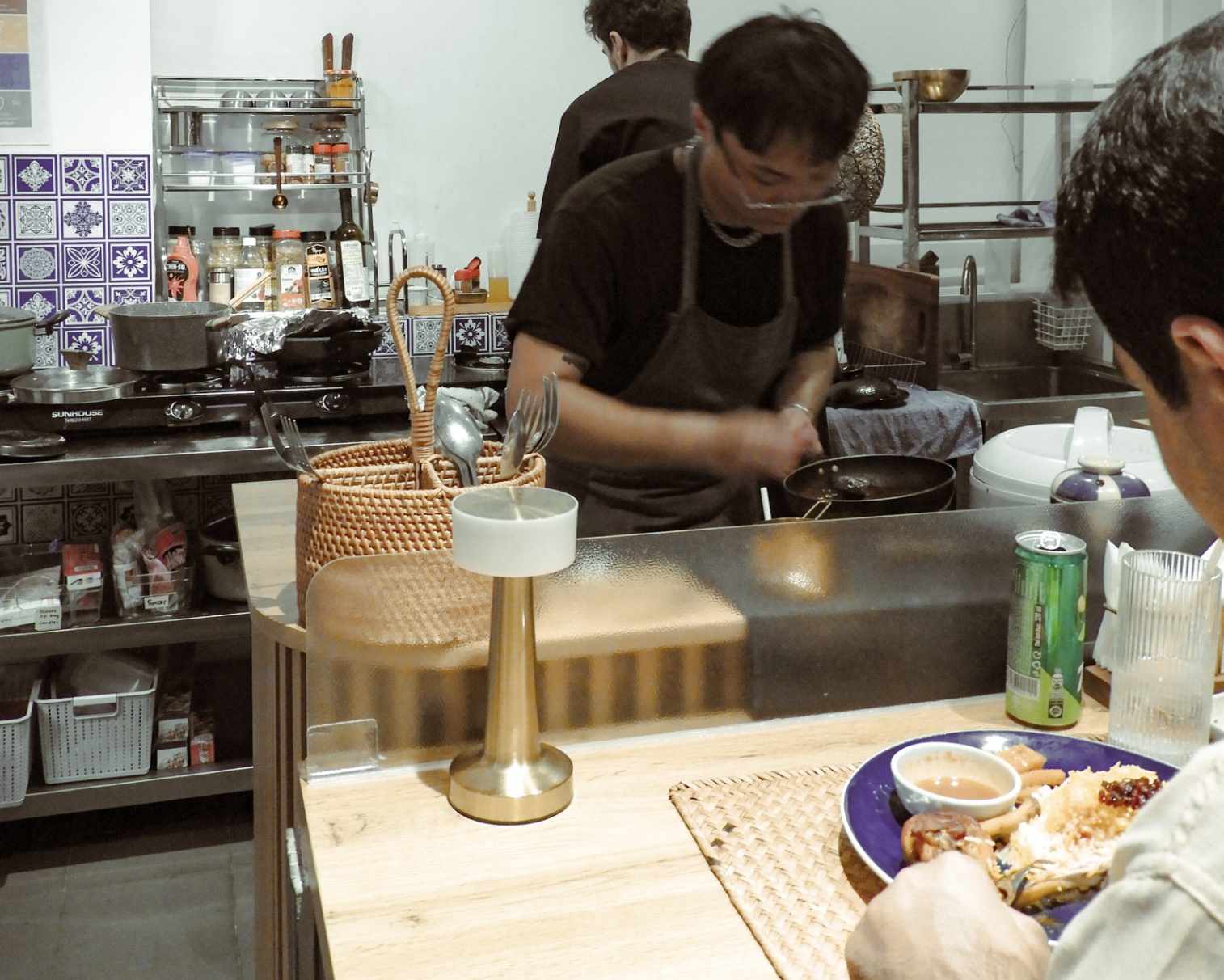From Sauce to Stardom: How Vietnamese fish sauce became a culinary star
Transforming everything it touches, this umami-rich fermented staple from Vietnam is a must-have in every Vietnamese household, street stall and nowadays, even fine dining restaurants around the world.
Commonly misinterpreted for its potent odour, Vietnamese fish sauce is a savoury, umami-rich fermented condiment that dates back more than 300 years and is regarded as a household staple in Vietnamese cuisine. While its method of preparation has evolved over the decades, Vietnamese fish sauce has maintained its status and impact in Vietnamese cuisine and is even regarded as a culinary star by many chefs. Today, it is not uncommon to find fish sauce in the kitchens of fine dining institutions from Southeast Asia to Hong Kong and Italy used in unprec ways like dry-ageing steak.
Yet, contrary to popular belief and its long-standing popularity in Vietnam, fish sauce is not one and the same. Over the years, countless producers have stepped up to produce fish sauce including commercial factories and home enthusiasts and hobbyists to keep up with the increasing demand (100-120 million litres of fish sauce is produced in Vietnam annually) for this beloved ingredient around the world.
However, according to Danny Tran, fourth generation owner of premium artisanal fish sauce enterprise Son Fish Sauce, only about 20% of fish sauce produced in Vietnam still uses traditional methods. Regardless, one thing remains in the case of fish sauce: you get a completely new meal with just a few drops.
I chat with Danny Tran of Son Fish Sauce (the only one who has won medals in Vietnam and overseas) about how the pungent and potent Nuoc Mam (fish sauce), the backbone of Vietnamese cuisine rose from sauce to stardom and into the hearts of white-cloth kitchens around the world.
So, what is fish sauce?
Just like in Pho, different parts of Vietnam produce different types of fish sauce depending on the type of fish used, method of preparation and where its produced - Phu Quoc or Phan Thiet in Vietnam.
More than 300 years ago, anchovies were regarded as “poor person fish” because it was too small to be cooked so their main use was to make fish sauce, which is a result of fermenting fish and sea salt together without interference coupled with the tropical climatic conditions and humidity unique to Vietnam. Fermentation was a very cheap and popular method for food preservation back in the day and not to mention, safe seeing how fermented foods kill most bacteria during the process.
As it turns out, anchovies are great for making fish sauce because they’re “vegetarian fish” and consume only plankton. This means the by-product of the fermentation process, which breaks down the guts and protein of the fish, is a much purer product because well, “anchovies have nothing in their guts”, says Danny. Another reason is that anchovies cannot be farmed and are always wild-caught. This unique trait entails traditional fish sauce makers being located near the coastline to be close to Vietnam’s prolific supply of anchovies.
For multiple reasons, fish sauce made from real anchovies (as opposed to anchovy extract, which is a common ingredient in commercial fish sauce) from Southwest Vietnam is also priced higher than in other regions simply because it’s a “higher quality and purer product because it’s literally just anchovies and sea salt” according to Danny.
How is it made?
According to Danny Tran, “real fish sauce should only have fish (70%) and sea salt (30%)”. These two ingredients then undergo a year of fermentation in a barrel or a pot to give birth to the backbone of Vietnamese cuisine. The proteins in the fish are broken down during the fermentation process to create a myriad of umami compounds, which give rise to distinct bursts of flavour.
Besides its exquisite flavour, traditional fish sauce is also “safer to consume” according to Danny, as the fermentation process kills over 90% of bacteria. In fact, fermented foods are amongst the safest for humans to eat (without critical errors). For non-traditional fish sauce producers, artificial preservatives are added to kill off bacteria which I find out is not the only thing that’s added during the process.
To make up for not using fresh anchovies, some producers add anchovy extract to enhance the product’s ‘fish sauce flavour’. According to Danny (you’re going to want to sit down for this), it’s a mix of these additives that result in the sauce’s infamous and pungent smell. Delving further into how fish sauce is produced in commercial factories, Danny mentions is a mish-mash of “leftover fish from the market that’s dried and preserved with rice" this is also why many commercial fish sauce brands are not gluten-free. In other cases, fish sauce is made from diluted fish sauce discarded from traditional fish sauce factories mixed with wastewater from MSG manufacturers.
What’s driving the demand for artisanal fish sauce?
Thankfully, more fish sauce purists and producers are stepping up and making fish sauce the traditional way to align with the growing global demand for:
Healthier eating and clean eating trends (sans preservatives)
With recent news in Vietnam spotlighting potentially dangerous chemical additives that are typically banned in both developed and underdeveloped countries found in the nation’s food industry, countries around the world have been issuing recalls of made-in-Vietnam products.
According to recent news, "ministries and agencies are expected to complete the development of food safety standards at the end of 2022 and these limits on substance residues in food products will be publicized by the Ministry of Health, while draft regulations will be jointly built by the Ministry of Agriculture and Rural Development and the Ministry of Industry and Trade in association with the health ministry.”
Hyperlocal artisanal food products that are made sustainably and naturally
The pandemic spotlighted the connection between one’s health and the food one consumes, which has sparked an artisanal food movement where consumers want to know the origin, provenance, how their food is made and that it’s made with natural and fresh ingredients.
While the artisanal food movement is not new but it has significantly grown in traction post-pandemic with a shift in focus going back to ancient eating habits using seasonal produce. Plus, people want to buy from brands that they can trust, someone with a story and passion for handcrafting the product, like your friend or familiar face they can associate with the brand as they become more careful about what they eat.
Vietnamese ingredients and flavours gaining international recognition and entering the kitchens of fine dining restaurants (Vanda and Bolero in America as well as homegrown concepts Anan and Gia)
As a result, foodies (and chefs) are becoming familiar with Vietnamese flavours in an elevated manner and looking for high-quality Vietnamese products to create similar experiences.
Vietnamese fish sauce in modern kitchens
In Australia, fish sauce is used as a salt substitute, which is what Son Fish Sauce’s bottle says! “This is salt that’s good for you, kinda like a healthy substitute for salt. There is sodium in it of course but nobody is asking you to take a shot of it”, says Danny. Anchovies are rich in fish oil and packed with amino acids, which are the building blocks for building muscles, preventing illnesses and causing chemical reactions in the body, as compared to table salt which is processed.
In America, chefs are looking to fish sauce as a drying agent for steak. For steak enthusiasts, using fish sauce is a shortcut to the costly and long dry-ageing technique (which is used to enhance the texture and flavour of meat). The acid in the fish sauce tenderizes the meat and leaves behind a rich umami flavour without a fishy taste. And of course, any dish that uses anchovies (Caesar salad, pasta sauce and pizza etc.), fish sauce easily substitutes salted canned anchovies, a beloved delicacy in Europe.
What to look out for when buying fish sauce?
If you’re like me and ready to experiment with fish sauce as a salt substitute, dry-ageing agent or perhaps even in a cocktail? Here are a few tips from Danny from Son Fish Sauce on how to buy the perfect bottle: (1) read the ingredients on the back of the bottle, it should have only fish and salt; (2) rich and thick texture, you don’t want a product that’s too diluted.
**Son Fish Sauce will be distributed in Vietnam from Q4 2022 onwards













Like what you read?
Discover Vietnam’s coming-of-age food and drink scene with one of our tours and experiences exclusively available at Saigon Social